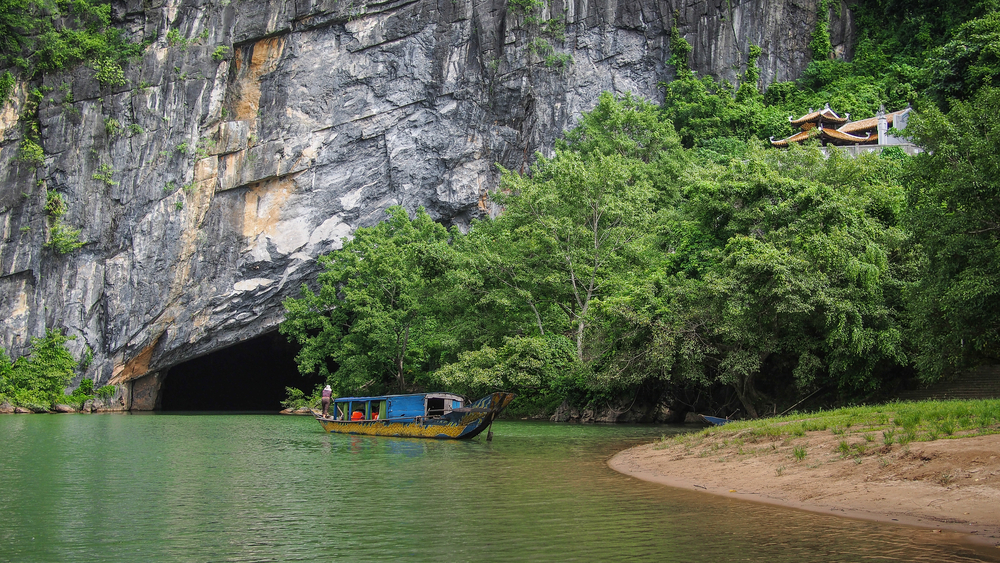Nature: the largest cave in the world continues to grow
Adventure Descent to the most amazing caves on the planet
The
Son Doong
underground labyrinth
, excavated and eroded over millions of years, reaches 200 meters high in some areas.
Or what is the same: it could contain a block
of 40-story skyscrapers
.
The interior of this immense Vietnamese cave houses a tunnel of more than five kilometers, a 90-meter high calcite barrier - the
Great Wall of Vietnam
- and gigantic stalagmites and stalactites.
A local collector, Ho Khanh, discovered it by chance in 1991 when he found the entrance to the cave and heard the sound of a river inside.
It was hidden in the
Phong Nha-Ke Bang National Park
, a Unesco Heritage site.
He tried to return to it but could not find the opening, hidden in the middle of a lush jungle, and the place fell into oblivion for almost 20 years.
In 2009, Khanh and a team of British investigators located the entrance, and four years later, part of it was opened to tourists.
LIMITED NUMBER OF VISITORS
Since then, only one travel agency,
Oxalis
, has been allowed to show it, to limit the number of visitors.
The aim is to avoid the mistakes made in other emblematic places of the country, such as
Ha Long Bay
or the
beaches of Nha Trang,
threatened by mass tourism.
Only a few hundred visitors enter Son Doong each year.
It costs about
50 euros per visit
and 2,500 euros for four days of exploration.
The money raised primarily benefits the local population, a boon in this poor region in the center of the country.
Entrance to the cave, in the Phong Nha-Ke Bang NP.
Before, young people went to the national park to illegally cut
agarwood,
which is used to make incense.
Others hunted civets and porcupines, endangered species.
"We were always under
threat from rangers
(and) we were doing nothing good for nature," says Ho Minh Phuc, a former lumberjack who has become a porter for groups authorized to explore the cave.
Between guides, porters and owners of small tourist lodgings, some 500 locals live thanks to Son Doong and the other gigantic cavities of the national park.
THE IMPACT OF A NEW CABLE CAR
But the ecosystem is still under threat, as UNESCO points out in a 2019 report. A
cable car project
to Son Doong
was abandoned
, but another is on the table to reach a cave located 3.5 kilometers away.
This will cause "a radical change in the nature of the proposed tourist offers (...) and there will undoubtedly be an
irreversible impact
on the environment, largely unspoilt," warned Unesco.
Experts are also concerned.
The pandemic hits tourism in Vietnam squarely: the number of foreign visitors fell by almost 80% in 2020 compared to 2019, when the country welcomed 18 million foreign visitors, a record.
The economic situation is such that, once the health crisis ends, Vietnam could give in to developers and develop infrastructure around the park's cavities, experts warn.
The authorities have put in place "
very good
protection policies
, but they often ignore them," says Peter Burns, a consultant who worked on a sustainable tourism project in Vietnam.
For the porter Phuc it is essential not to succumb to
mass tourism
after the pandemic in Son Doong.
"It would be terrible, this natural wonder would be reduced to a minimum in a few years and our livelihood would disappear," he warns.
According to the criteria of The Trust Project
Know more
UNESCO
tourism
PollNeither beach nor mountain: this is the wonder of nature preferred by the Spanish
Dubai: the land of opulence where tourists flock to escape confinement
Readers Send us a picture of your favorite corner close to home
See links of interest
Work calendar
Quique San Francisco

